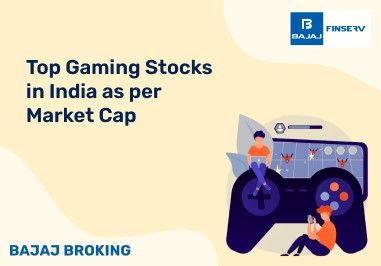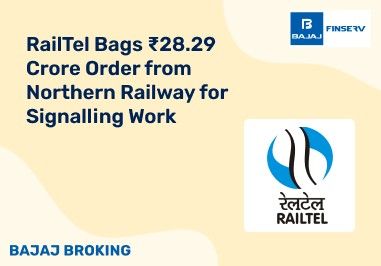BAJAJ BROKING
PDP Shipping & Projects IPO is Open!
Open a Free Demat Account
Trade Now, Pay Later with up to 4x
Track Market Movers Instantly
What is a Security Market Line?
It takes more than just keeping track of stock prices and planning your entrance or exit to invest in the stock market or trade short-term price changes. You need to go beyond the prices and take advantage of the risk-reward ratio if you want to develop into a skilled and active trader who can take advantage of the possibilities on the stock market. Many traders and investors frequently undervalue the significance of the risk-reward ratio. If you are also prone to doing this, you should be aware that it might wind up costing you money since you can end up taking too much risk for a small gain or not enough risk for a large reward that could pay off nicely. If you are interested in understanding the risk-reward profile of a stock, the Security Market Line (SML) is an essential concept for you. Read on to know about the definition of the Security Market Line, how it is calculated for charting purposes and its advantages and limitations.
What is the Security Market Line?
The meaning of the security market line can be explained in simple terms as follows. It is a graphical line that shows you the relationship between the expected returns from a stock or investment, and the risks associated with that asset. Also known as the characteristic line, it is a graphical representation of the Capital Asset Pricing Model (CAPM).
The x-axis or the horizontal axis represents the risk of the asset or its beta, while the y-axis or the vertical axis represents expected returns from the asset. By plotting the security market line, you can get a better idea of the relationship between the risk and the expected returns from a stock, making it easier to assess if the risk is worth the expected returns.
The Security Market Line Equation
Like every graphical line, the security market line is also governed by an equation that connects the two parameters used to plot it — namely the risk and the expected reward. The SML equation is as follows:
| E(Ri) = Rf + βi [E(Rm) — Rf] |
Here, the parameters used in the above equation mean the following:
- E(Ri) is the expected rate of return from the stock or asset
- Rf is the risk-free rate of return, i.e. the theoretical rate of return that carries zero risk
- βi is the systematic risk of the stock or asset
- E(Rm) is the expected rate of return from the market as a whole
- E(Rm) — Rf is known as the risk premium
A more understandable version of this formula would be as follows:
| Expected rate of return = Risk-free rate of return + Beta (Market Return — Risk-free rate of return) OR Expected rate of return = Risk-free rate of return + (Beta x Risk Premium) |
When you represent this equation in the form of a graph, you get the security market line.
Also Read: Difference Between SML and CML
Beta: The Slope of the Security Market Line
The beta used in the security market line equation represents the risk associated with the asset, as mentioned above. It is one of the most crucial aspects of plotting the SML and assessing the risk-reward profile of a stock or asset.
To be more specific, the beta measures the systematic or non-diversifiable risk — which stems from the market itself and is inherent to the stock or asset in question. Based on the value of beta, you can assess how risky a stock is in comparison with the market. Here’s how:
- A beta of 1 indicates that the stock is as risky as the market
- A beta that is less than 1 indicates that the stock has lower risk than the market
- A beta of more than 1 indicates that the stock carries more risk than the market
Also Read: Risk Management In Stock Market
The Characteristics of the Security Market Line
Now that you know the meaning of the SML and the equation used to plot it, let’s take a closer look at the key characteristics of the SML, so you can interpret it better.
- The security market line represents the opportunity cost of an investment.
- If the beta of a security is zero, its expected return is equal to the risk-free rate of return.
- The risk premium greatly influences the slope of the security market line — where a steeper slope is caused by a higher risk premium and vice versa.
- Assets that are above the security market line are considered to be undervalued because they offer a higher expected rate of return for any given risk level.
- Conversely, assets below the security market line are overvalued because their expected rates of return are lower for a given level of risk.
Advantages and Limitations of Security Market Line
Like every graphical technical indicator, the SML also has its own advantages and limitations. Let’s take a closer look at both these aspects for a comprehensive understanding of the SML.
Advantages:
- It is easy to use the CAPM and plot the security market line to assess the expected returns from an asset.
- Comparing two portfolios is easy because the SML model assumes that they are both well-diversified and thus takes into account only the systematic risk.
- The systematic risk is neglected by other models like the DDM and the WACC model, but the SML and CAPM methods account for it.
Limitations:
- The market returns taken into account here are based on past trends, and are not guaranteed in the future.
- Predicting the accurate beta of a stock can be difficult and prone to erroneous assumptions.
Additional Read: What is PE Ratio?
Conclusion
Given the upsides and limitations of the SML, it is best to use it in conjunction with other models. This will help you assess the valuation, risk and rewards of a stock more accurately. That said, the SML makes it easier to represent the Capital Asset Pricing Model graphically and to compare the risks and expected rewards from an asset — which is also crucial for stock assessment and selection.
Share this article:
Read More Blogs
Our Secure Trading Platforms
Level up your stock market experience: Download the Bajaj Broking App for effortless investing and trading













